Recombinant H3N2 NA protein(Met1-Ile469)
| Cat.No. : | NA-427H |
| Product Overview : | Recombinant Influenza virus A (A/Aichi/2/1968)(H3N2)) Neuraminidase (Q75VQ4.1) (Met1-Ile469), termed as NA, was expressed in HEK293. |
- Specification
- Gene Information
- Related Products
- Case Study
- Application
- Download
| Species : | H3N2 |
| Source : | HEK293 |
| Tag : | Non |
| Protein Length : | Met1-Ile469 |
| Form : | Lyophilized from sterile PBS, 1%Triton X-100 PH 7.4. Normally 5 % - 8 % trehalose, mannitol and 0.01% Tween80 are added as protectants before lyophilization. |
| Bio-activity : | Measured by its ability to cleave a fluorogenic substrate, 2'-(4-Methylumbelliferyl)-α-D-N-acetylneuraminic acid. The specific activity is > 100 U. |
| Molecular Mass : | The recombinant Influenza virus A (A/Aichi/2/1968)(H3N2)) Neuraminidase consists of 469 amino acids and predicts a molecular mass of 52.2 kDa. |
| Endotoxin : | < 1.0 EU per μg protein as determined by the LAL method. |
| Storage : | Samples are stable for up to twelve months from date of receipt at -20°C to -80°C. Store it under sterile conditions at -20°C to -80°C. It is recommended that the protein be aliquoted for optimal storage. Avoid repeated freeze-thaw cycles. |
| Reconstitution : | It is recommended that sterile water be added to the vial to prepare a stock solution of 0.2 ug/ul. Centrifuge the vial at 4°C before opening to recover the entire contents. |
| ◆ Cell & Tissue Lysates | ||
| NA-1743HCL | Recombinant H5N1 NA cell lysate | +Inquiry |
| NA-001H9N2CL | Recombinant H9N2 NA cell lysate | +Inquiry |
| NA-874HCL | Recombinant H7N9 NA cell lysate | +Inquiry |
| NA-001H1N1CL | Recombinant H1N1 NA cell lysate | +Inquiry |
| NA-2811HCL | Recombinant H1N1 NA cell lysate | +Inquiry |
Case 1: Wang Y, et al. Elife. 2021
Neuraminidase (NA), a major player in H3N2 flu virus, has been changing for over 50 years due to immune system pressures. Recently, it's been spotlighted as a promising vaccine target, but we still don't fully understand the limitations on how it changes antigenically. In this study, researchers used mutagenesis and sequencing techniques to explore how NA evolves in a specific area across six human H3N2 strains, collected about a decade apart. Here the evolutionary fitness landscape is pretty similar across these strains, with the interactions between mutations being highly consistent. The findings highlight that the overall charge in this specific NA region influences these interactions. They also observed that coevolution of residues is linked to these charge-based interactions.
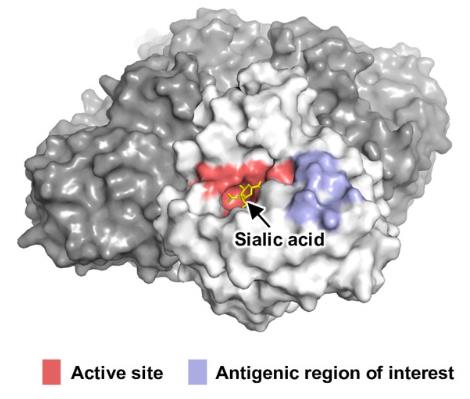
Fig1. The enzyme active site and the antigenic region of interest are highlighted as red and blue, respectively.
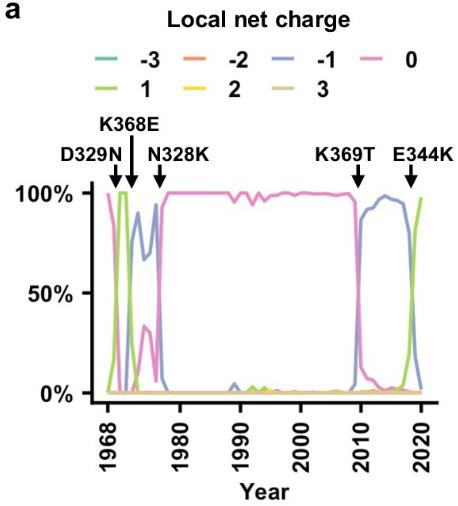
Fig2. The natural evolution of frequency of haplotypes by local net charge at the NA antigenic region of interest is shown.
Case 2: Ellis D, et al. Nat Commun. 2022
Scientists are taking a closer look at the influenza virus protein neuraminidase (NA) because it's a key target for both antiviral drugs and immune system defenses. In a recent study, researchers investigated the NA from various non-bat influenza subtypes. They found that these proteins can form different shapes, like a tetramer "open" state, which might explain why some strains of the virus are more stable than others. By designing proteins based on these findings, the team was able to stabilize these NAs in a "closed" state and capture high-resolution images using cryo-electron microscopy (cryo-EM). This stability not only boosts the protein's resistance to heat but also strengthens the binding to antibodies that humans produce when infected by the virus. Some of these antibodies target a specific site on the NA, while others focus on a common area that's crucial for the protein's function. Interestingly, integrating these more stable proteins into virus particles doesn't affect the virus's ability to function, providing a potential way to enhance vaccine effectiveness.
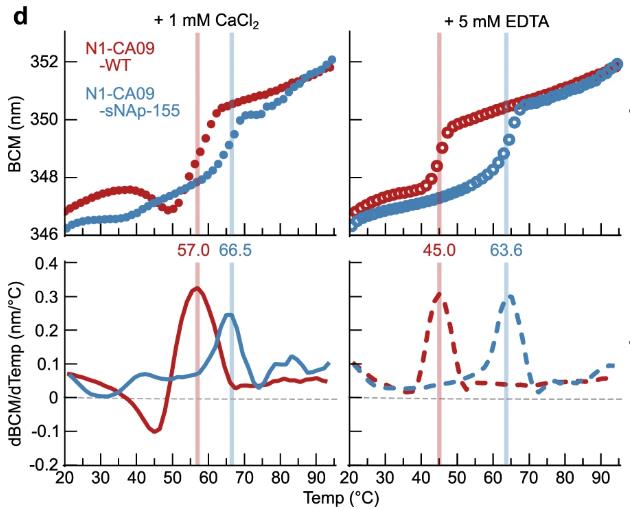
Fig1. Thermal denaturation of N1-CA09-WT and N1-CA09-sNAp-155 in the presence of CaCl2 or EDTA.
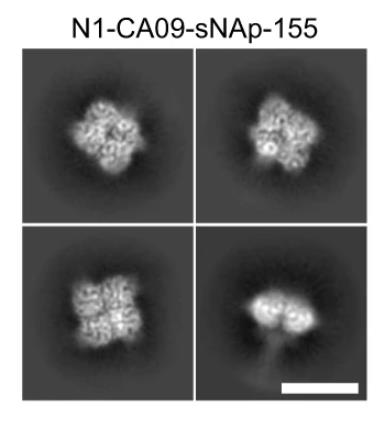
Fig2. Cryo-EM 2D class averages for N1-CA09-sNAp-155 showing fully closed tetramers.
The recombinant H3N2 NA protein, or neuraminidase, is pretty much at the heart of the H3N2 flu virus. Think of it like the virus's wingman, helping release new viral particles from infected cells and letting them slip through the mucus in our airways so it can spread. This protein is also the main target for neuraminidase inhibitors, a kind of medication used to fight flu infections.
Lately, studies have been zeroing in on how neuraminidase plays a big part in immunity against different flu types. It doesn't mutate as quickly as the hemagglutinin (HA) protein, which makes it a more reliable focus for vaccine developers. Some research even suggests that tweaking the stalk part of this protein makes it better at triggering an immune response, potentially leading to vaccines that have broader coverage.
When it comes to both science and industry, the recombinant H3N2 NA protein is a big deal. Researchers use it to get a deeper look into how the influenza virus works, which is crucial for crafting better vaccines and treatments. This knowledge is key to tackling the flu. In manufacturing, this recombinant protein is a game-changer for making vaccines cost-effectively while still hitting the mark on quality. Besides boosting how well vaccines work, it's also a handy tool for diagnosing the flu, which means quicker and more accurate detection during outbreaks.
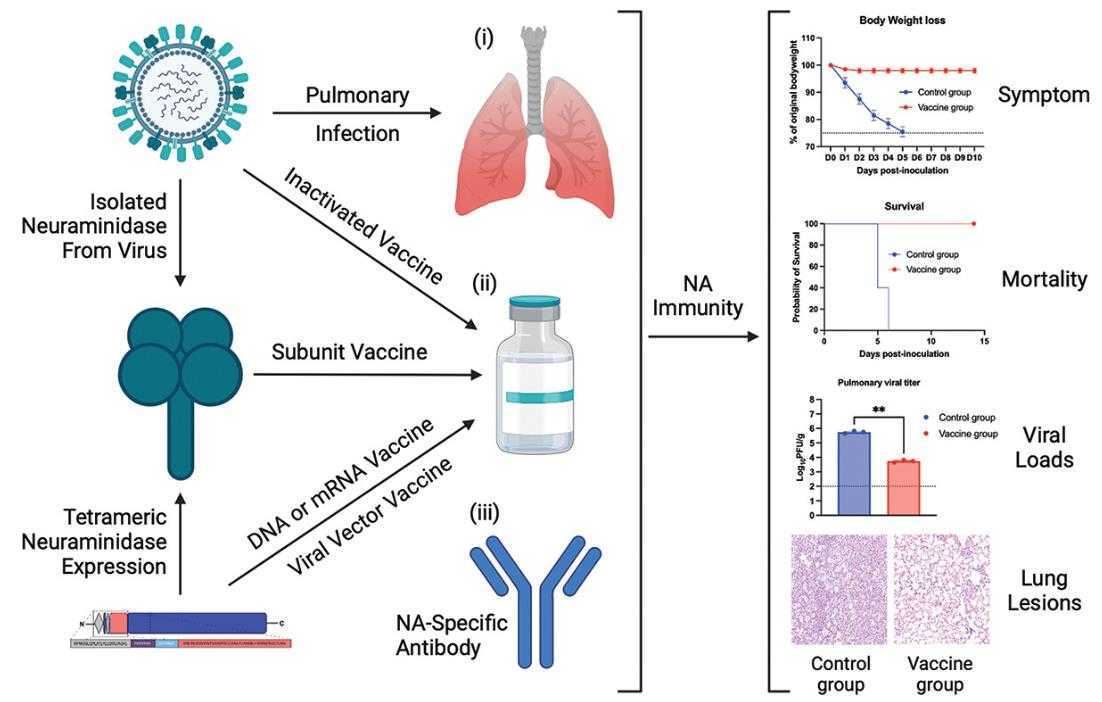
Fig1. Eliciting NA-specific immunity. (Xiaojian Zhang, 2024)
Not For Human Consumption!
Inquiry
- Reviews
- Q&As
Ask a Question for All NA Products
Required fields are marked with *
My Review for All NA Products
Required fields are marked with *
Inquiry Basket


